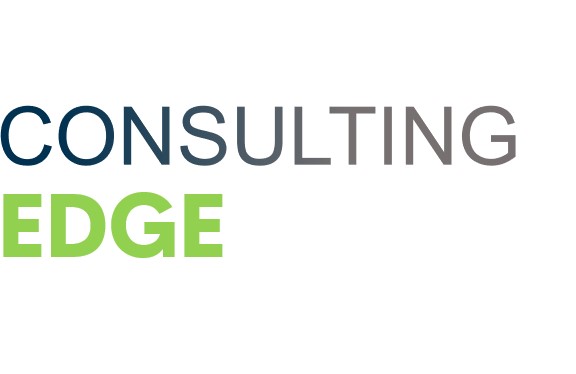
Transforming Data through Database Analytics
Database analytics transforms raw data into strategic insights, enabling precise decision-making across industries. By using advanced technologies and systematic data processing, you can uncover trends, optimize operations, and gain competitive advantages in today’s data-driven marketplace.
Key Takeaways:
- Database analytics enables companies to systematically store, process, and analyze large data volumes for generating actionable business intelligence.
- Advanced database technologies like columnar databases, in-memory systems, and MPP platforms are driving enhanced analytical capabilities.
- The global data analytics market is projected to reach $132.9B by 2026, with 97.2% of companies investing in big data and AI initiatives.
- Organizations implementing database analytics experience substantial performance improvements, including 81% higher profitability and 63% improved operational efficiency.
- Leading analytics tools such as Sigma Computing, SAS, Tableau, and Power BI continue to evolve with more sophisticated and user-friendly data analysis capabilities.
The power of database analytics lies in its ability to process massive data sets that would overwhelm traditional analysis methods. Modern database analytics platforms extract meaningful patterns from disparate data sources, giving you actionable insights that drive strategic decisions.
Companies that leverage data analytics outperform competitors by making faster, more accurate decisions. According to recent studies, data-driven organizations are 23 times more likely to acquire customers and 6 times more likely to retain them compared to businesses using intuition-based approaches.
Your current analytical capabilities depend on both the database architecture you’ve implemented and the tools you use to interpret results. Cloud-based analytics solutions have democratized access to advanced tools, allowing businesses of all sizes to benefit from powerful data lake analytics without extensive infrastructure investments.
Data visualization represents a crucial component of effective analytics. Converting complex numerical information into clear, interactive visuals helps stakeholders immediately grasp important trends and outliers in your data.
“Database analytics is the compass businesses need to navigate the vast ocean of raw data, transforming it into strategic insights that drive informed decision-making and competitive advantage. As organizations increasingly adopt advanced technologies, those harnessing the power of analytics are not just optimizing operations but are also poised to achieve remarkable profitability and productivity gains in a data-driven world.”
Defining Database Analytics
Database analytics involves the systematic use of specialized databases for storing, processing, and analyzing large data volumes. Its primary goal centers on generating business intelligence and supporting decision-making processes across organizations. This specialized approach enables companies to uncover trends, forecast outcomes, and optimize operations through data-driven insights.
The foundation of effective database analytics lies in its key characteristics. These systems are specifically designed to be read-optimized, allowing for quick data retrieval and analysis. They’re built with scalability in mind to handle growing data volumes and feature advanced processing capabilities that transform raw information into actionable intelligence.
Key Database Analytics Technologies
Several powerful technologies currently drive the database analytics landscape. Each serves different analytical needs and offers unique advantages for your business:
- Columnar databases like Apache Kudu store data by columns rather than rows, dramatically improving query performance for analytical workloads.
- In-memory databases such as SAP S/4HANA keep data in RAM instead of disk storage, delivering significantly faster processing speeds.
- MPP (Massively Parallel Processing) systems like Amazon Redshift distribute processing across multiple nodes, enabling efficient handling of large datasets.
- OLAP (Online Analytical Processing) platforms such as Snowflake optimize complex queries and provide multi-dimensional analysis capabilities.
The leading analytics tools that leverage these database technologies include Sigma, SAS, Tableau, and Power BI. Each tool offers unique visualization capabilities and analytical functions to help you extract maximum value from your data.
The market for database analytics continues to expand rapidly. With the global data analytics market projected to reach $132.9B by 2026, businesses aren’t holding back on investments. Currently, 97.2% of companies are investing in big data and AI initiatives, while 82% plan to increase their BI and data analytics budgets in 2025.
Organizations implementing database analytics see substantial returns on investment. Companies using advanced analytics experience 81% higher profitability, 63% improved operational productivity, and 50% enhanced profit margins through personalized customer experiences. These benefits explain why more businesses are integrating strategic dashboards to monitor and capitalize on their data resources effectively.
Expert Insight: To harness the full potential of database analytics, it’s crucial to select technologies that align with your analytical needs, such as columnar databases for enhanced query performance or in-memory databases for rapid processing. Investing in advanced analytics tools can dramatically improve business outcomes, as organizations leveraging these technologies report significantly higher profitability and productivity. As the data analytics market continues to grow, prioritizing a robust analytics strategy will enable your company to make informed, data-driven decisions that optimize operations and enhance customer experiences.
Market Growth and Investment Landscape
The database analytics market is experiencing explosive growth as organizations recognize its value. With global data analytics projected to reach $132.9B by 2026, businesses are rapidly allocating resources to leverage data for competitive advantage. This surge reflects how companies are prioritizing data-driven decision making to transform operations and customer experiences.
Investment trends show remarkable commitment to analytics technologies. Currently, 97.2% of businesses are investing in big data and AI initiatives, while 82% plan to increase their business intelligence and data analytics budgets in 2025. This widespread adoption highlights the critical role analytics plays in modern business strategy and strategic planning mastery.
Regional Market Distribution
North America continues to dominate the analytics landscape with a projected 42.8% revenue share by 2037. Within this region, the United States maintains leadership with 73.3% market share. This regional variation reflects different maturity levels in data infrastructure and digital transformation journeys.
The following table showcases key market growth indicators that are driving investment decisions:
| Market Indicator | Statistic | Significance |
|---|---|---|
| Global Market Value (2026) | $132.9B | Demonstrates rapid market expansion |
| Companies Investing in Big Data/AI | 97.2% | Shows near-universal adoption |
| Companies Increasing Analytics Budgets | 82% | Indicates growing priority |
| North America Revenue Share (2037) | 42.8% | Highlights regional leadership |
| US Market Share | 73.3% | Shows concentration within leading region |
These growth patterns have prompted businesses to develop more sophisticated strategic dashboards to monitor performance against industry benchmarks. Organizations that fail to keep pace with analytics investments often struggle with outdated insights and reactive rather than proactive decision making.
For many enterprises, the challenge isn’t whether to invest in database analytics but how to optimize investments for maximum returns. This requires careful consideration of both technology infrastructure and organizational readiness to implement effective risk response planning when adopting new analytics capabilities.
By 2026, the global data analytics market is expected to reach $132.9B, signifying a robust shift towards data-driven decision making across industries.
forbes.com
Technological Infrastructure and Innovations
The foundation of effective database analytics hinges on robust technological infrastructure. With 70% of enterprises moving towards data lakehouse architectures, organizations are increasingly recognizing the value of unified platforms that combine the best features of data warehouses and data lakes. These architectures allow for more flexible data management while maintaining the performance advantages needed for strategic dashboard implementation.
Cloud adoption continues to drive the development of centralized data repositories, enabling businesses to scale their analytics capabilities without significant upfront hardware investments. This shift has democratized access to advanced analytics tools, allowing companies of all sizes to leverage sophisticated data processing technologies previously available only to large enterprises.
Emerging Technologies Reshaping Analytics
Several cutting-edge technologies are transforming how businesses interact with and derive value from their data:
- Agentic AI systems that autonomously perform complex analytical tasks and suggest actions
- Quantum computing applications showing promise for solving previously intractable optimization problems
- AR/VR technologies creating immersive data visualization environments for improved pattern recognition
- Real-time data streaming solutions that help organizations combat data silos and enable immediate insights
These innovations are complemented by specialized database technologies designed specifically for analytical workloads. Columnar databases like Apache Kudu organize data to optimize query performance, while in-memory databases such as SAP S/4HANA eliminate disk I/O bottlenecks for lightning-fast processing. Massively Parallel Processing (MPP) systems like Amazon Redshift distribute workloads across multiple nodes, and OLAP platforms such as Snowflake provide optimized environments for multidimensional analysis.
Leading analytics tools including Sigma, SAS, Tableau, and Power BI continue to evolve, offering increasingly sophisticated capabilities while becoming more user-friendly. This democratization of analytics allows more stakeholders to engage with data, supporting project collaboration across departments.
The convergence of these technologies creates powerful ecosystems where businesses can transform raw data into actionable intelligence. By investing in the right infrastructure, you’ll position your organization to leverage the full potential of database analytics, driving more informed decision-making and creating competitive advantages in your market.
Organizations that effectively leverage technological infrastructure and data lakehouse architectures can achieve up to 30% faster data processing speeds, enhancing decision-making capabilities.
forbes.com
Key Database Analytics Technologies
Database analytics technologies have revolutionized how businesses extract value from their data assets. These specialized systems offer enhanced capabilities beyond traditional databases, providing the foundation for powerful business intelligence operations.
Core Technologies Driving Modern Analytics
Several key database analytics technologies currently dominate the market, each offering unique advantages for different analytical needs:
- Columnar databases store data by columns rather than rows, significantly improving query performance for analytical workloads. For example, Apache Kudu delivers fast analytics on rapidly changing data while maintaining strong data consistency.
- In-memory databases process data entirely in RAM rather than reading from disk, dramatically accelerating analysis speed. SAP S/4HANA exemplifies this approach, enabling real-time analytics across enterprise operations with processing speeds up to 100x faster than traditional databases.
- Massively Parallel Processing (MPP) systems distribute analytical workloads across multiple processors or servers. Amazon Redshift leverages this architecture to handle petabyte-scale data warehousing with exceptional query performance, making it ideal for executive reporting and analysis.
- Online Analytical Processing (OLAP) platforms optimize multidimensional analysis of business data. Snowflake’s cloud-native architecture separates storage from compute resources, allowing you to scale each independently based on your analytical demands.
The following table summarizes the leading analytics tools that leverage these database technologies:
| Tool | Specialization | Best For |
|---|---|---|
| Sigma | Live-data exploration | Business users needing direct data access |
| SAS | Advanced statistical analysis | Complex predictive modeling |
| Tableau | Data visualization | Creating interactive dashboards |
| Power BI | Self-service analytics | Microsoft-centric organizations |
When implementing these technologies, you’ll need to consider both your project success criteria and existing data infrastructure. Cloud adoption has facilitated centralized data repositories, with 70% of enterprises moving toward data lakehouse architectures that combine data lake storage with data warehouse functionality.
The growing integration of these technologies with emerging innovations like agentic AI and quantum computing continues to expand analytical possibilities. By selecting the right combination of database technologies, you’ll position your organization to extract maximum value from your data assets while supporting ethical data management practices.

Industry-Specific Applications and ROI
Database analytics delivers transformative business value across multiple sectors by turning raw data into actionable insights. Each industry leverages different analytical approaches to address unique challenges and opportunities.
High-Impact Industry Applications
In healthcare, predictive patient care analytics enables providers to anticipate health issues before they escalate. Hospitals implementing these systems can identify at-risk patients, optimize resource allocation, and improve treatment outcomes.
The financial sector relies heavily on database analytics for risk modeling and fraud detection. Banking institutions use sophisticated algorithms to analyze transaction patterns in real-time, significantly reducing fraud losses while improving regulatory compliance.
Manufacturing companies are increasingly incorporating IoT-driven predictive maintenance systems that analyze equipment data to forecast failures before they occur. This approach has dramatically reduced downtime and maintenance costs for forward-thinking manufacturers.
Organizations implementing advanced analytics solutions are seeing measurable financial benefits. The performance dashboards and scorecards built on these analytics platforms reveal impressive results:
| Performance Metric | Improvement Percentage |
|---|---|
| Profitability | 81% higher |
| Operational Productivity | 63% improved |
| Profit Margins (via personalized experiences) | 50% enhanced |
These figures explain why businesses across all sectors are prioritizing analytics investments. Retail organizations using customer analytics have significantly increased conversion rates through strategic dashboards that display real-time shopping behavior.
Transportation and logistics companies apply route optimization analytics to reduce fuel costs and delivery times. This application has become particularly valuable as fuel prices fluctuate and consumer expectations for rapid delivery continue to rise.
Educational institutions leverage learning analytics to identify struggling students early and personalize educational approaches. These risk identification systems have improved graduation rates at numerous colleges.
The ROI potential from database analytics varies by implementation quality and organizational readiness. Companies that integrate analytics into core business processes and decision-making frameworks see substantially higher returns than those treating analytics as a separate function.






